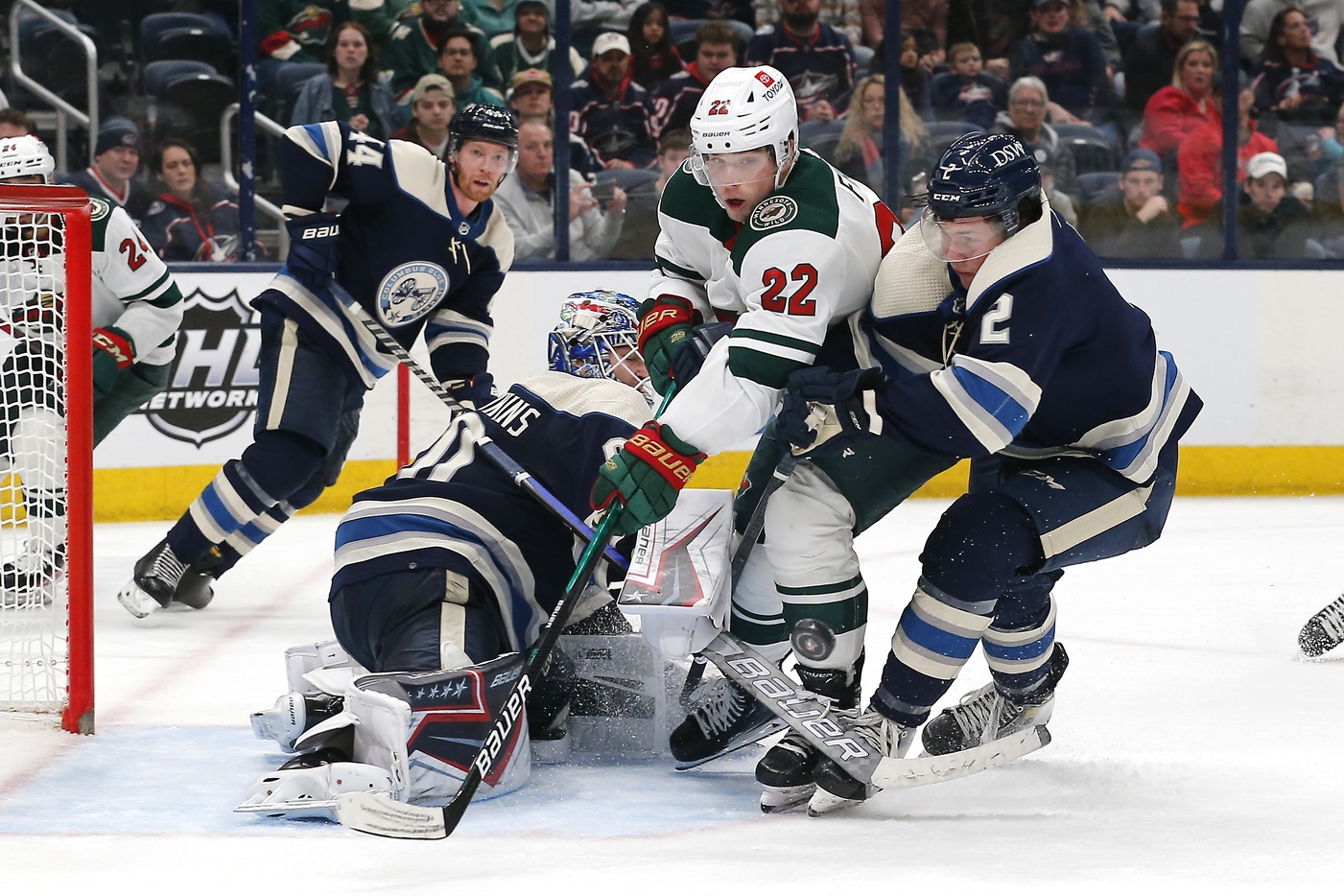
Many problem areas surfaced during the Minnesota Wild’s 4-8-0 start to the second half of the season. The Wild team that once had a case for Stanley Cup favorites suddenly had a few glaring holes. Bill Guerin may have told the media, "You can't trade your way out of problems, but he still went shopping, anyway." However, Minnesota's acquisition of Tyson Jost and Nic Deslauriers will give the bottom-six a new look, while Jacob Middleton and Marc-Andre Fleury look to shore up the defense. Guerin has maintained his trust in the group all year, so it’s no surprise to see him enhance it for the playoff run.
Still, the woeful power play that plagued the Wild since their trip to Canada is one issue Dean Evason will have to address these last 22 games. The 19th-ranked Wild power play has a 19.8% conversion rate the year and is just 6 for 39 (15.4%) in its last 14. Combined with a 25th-ranked penalty kill, that is a recipe for disaster come the playoffs.
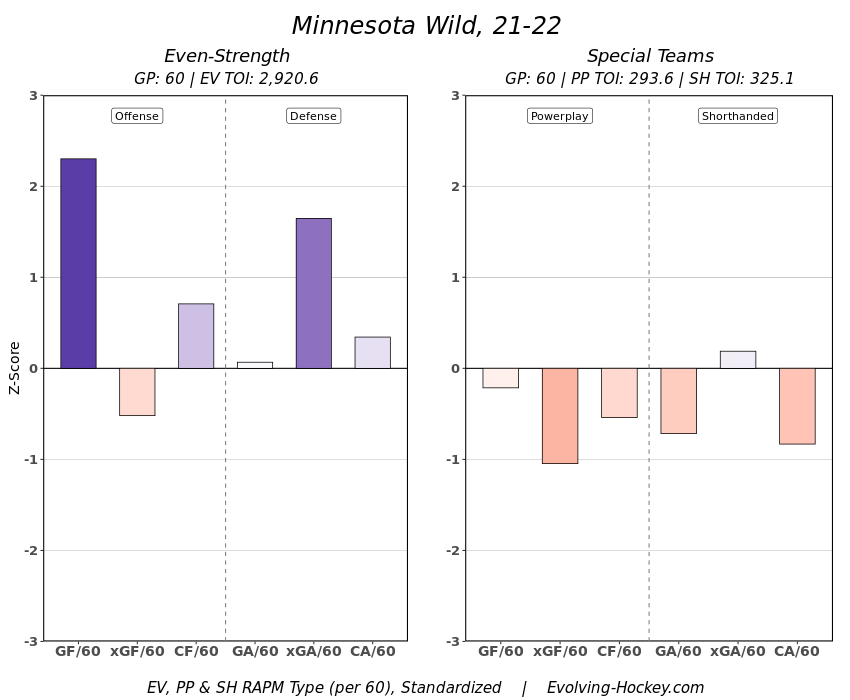
While they're well above league average at even strength, Minnesota’s anemic power play separates them from other contenders. The fix for this will have to come in-house and may require some creativity from Evason’s staff to sort it out.
Is this a personnel or system problem? Probably a bit of both. The players aren’t executing, but the usage of Minnesota’s most potent threats is questionable.
Since Boldy joined the team in January, the top unit was primarily Kirill Kaprizov, Mats Zuccarello, Joel Eriksson Ek, Matt Boldy, and Jared Spurgeon. The second unit was primarily Kevin Fiala, Ryan Hartman, Freddy Gaudreau, Marcus Foligno, and Matt Dumba or Alex Goligoski. Hartman and Boldy would swap for a few games, reuniting the top-two scoring lines on their respective power-play units. Evason would stick with this philosophy as he made yet another change this weekend, running two defensemen on either unit.
Evason relies on both units contributing and is not afraid to distribute ice time evenly between the two. However, that can become a fault as there is a noticeable gulf in quality between the two units.
Kaprizov leads the Wild in power-play ice time, playing 62.3% of possible 5-on-4 minutes with 62.3%, which is good for just 78th in the league (per Moneypuck). The top power plays — the Toronto Maple Leafs, New York Rangers, St. Louis Blues, Edmonton Oilers, and Boston Bruins — all have players in the top-20 of that category. You wonder if the solution is to get Kaprizov, the second-highest even-strength scorer in the league, a bigger slice of the pie at some point. The same goes for Spurgeon, who is far and away Minnesota’s best power-play quarterback.
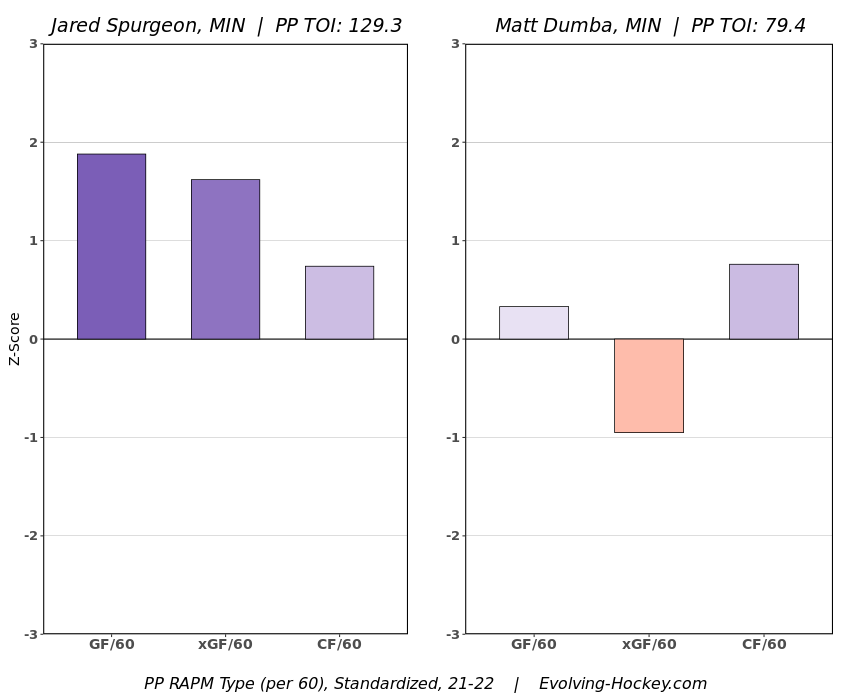
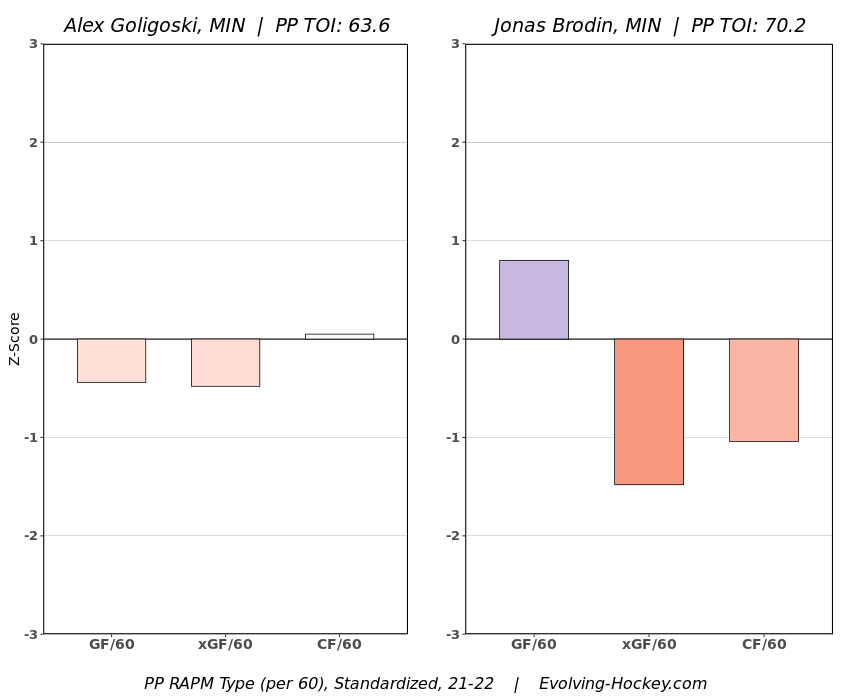
A closer to even ice time distribution is alright, but only if that second unit is near as good as the first. That isn’t the case in Minnesota. Marcus Foligno, Gaudreau, and Alex Goligoski have all seen significant power-play time this season, yet their expected goals shares are all below 75% (per Evolving Hockey). Basically, they’re giving up shorthanded chances at a much higher rate than almost every other power-play unit in the league. Regardless of the value those players bring at even strength, they’re actively hindering the struggling Wild special teams.
Deciding the three players alongside Kaprizov and Spurgeon is the real conundrum. Fiala, Kaprizov, Zuccarello, and Boldy are the primary drivers of the offense, but none of them play center. So with Joel Eriksson Ek slotting in for one of them, which dynamic duo gets split up? Fiala most likely finds himself as the odd man out. The argument for Fiala instead of Boldy is that Fiala’s skill set is perfect for the power play. He excels at zone entries, one-timers, and skating with the puck in tight spaces. Thanks to data from the AllThreeZones project, we can see which Wild players are best at driving play on the power play.

Both Kaprizov and Fiala would benefit from playing together on the top unit. Kaprizov could share some of the zone entry burden, while Fiala could benefit from Zuccarello and Kaprizov’s distribution. The point is that Fiala is the second-best forward on the team, and he needs to be getting as much power-play time as possible.
Regardless of who’s on the top unit, it means nothing without execution. Far too often recently, the power play looks lazy, indecisive, and careless. The power play against the Nashville Predators below is an excellent example. Fiala, Spurgeon, and Boldy all pass up chances to shoot before the play dies on Boldy’s stick and play goes the other way.
The lack of offense generated from the point is evident in Evason’s power-play system. Chance creation comes from the half walls, where Kaprizov, Zuccarello, and Boldy frequently look for redirections from Eriksson Ek or Hartman.
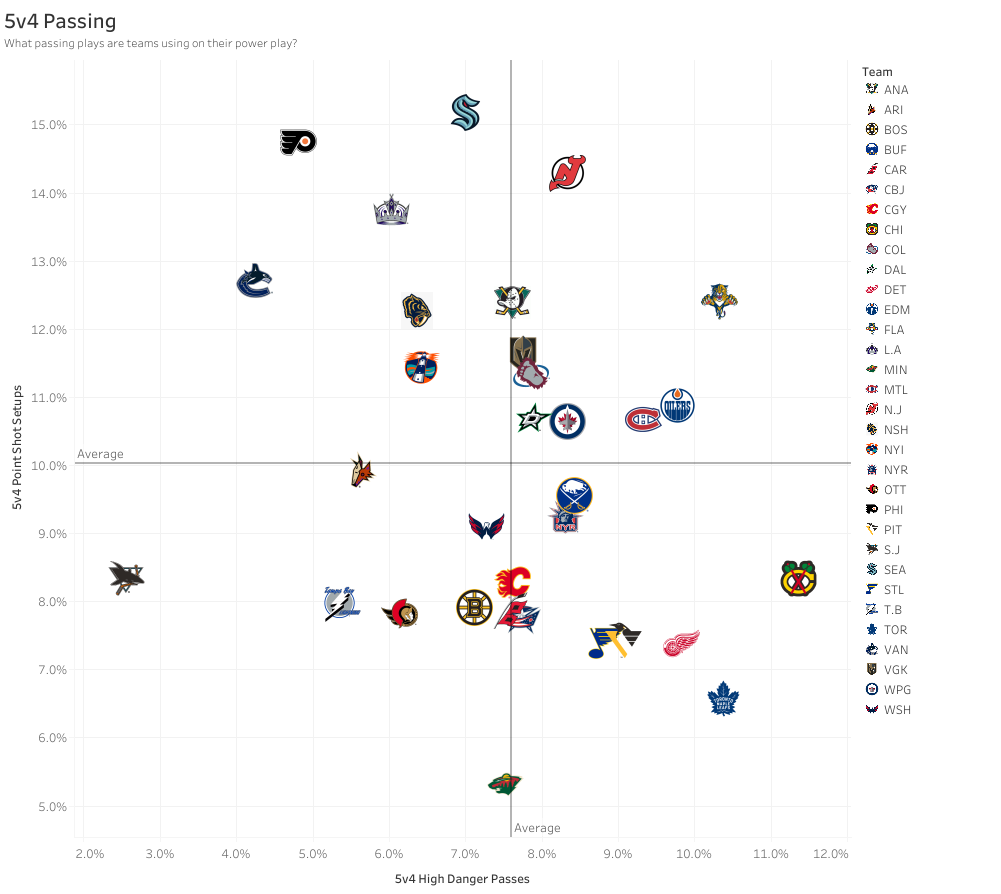
More point shots wouldn’t immediately translate to more goals, but it would give opposing penalty kills more to think about.
What’s even more troubling is that despite not using the point as much as other teams, the Wild still struggle to create high-danger chances on the man advantage. Only Gaudreau and Kaprizov are above league average in high-danger chance setups with the extra man, which is quite troubling considering the rate at which other top power plays produce chances. Look at this chart comparing Wild players with players from the top power plays in the league.
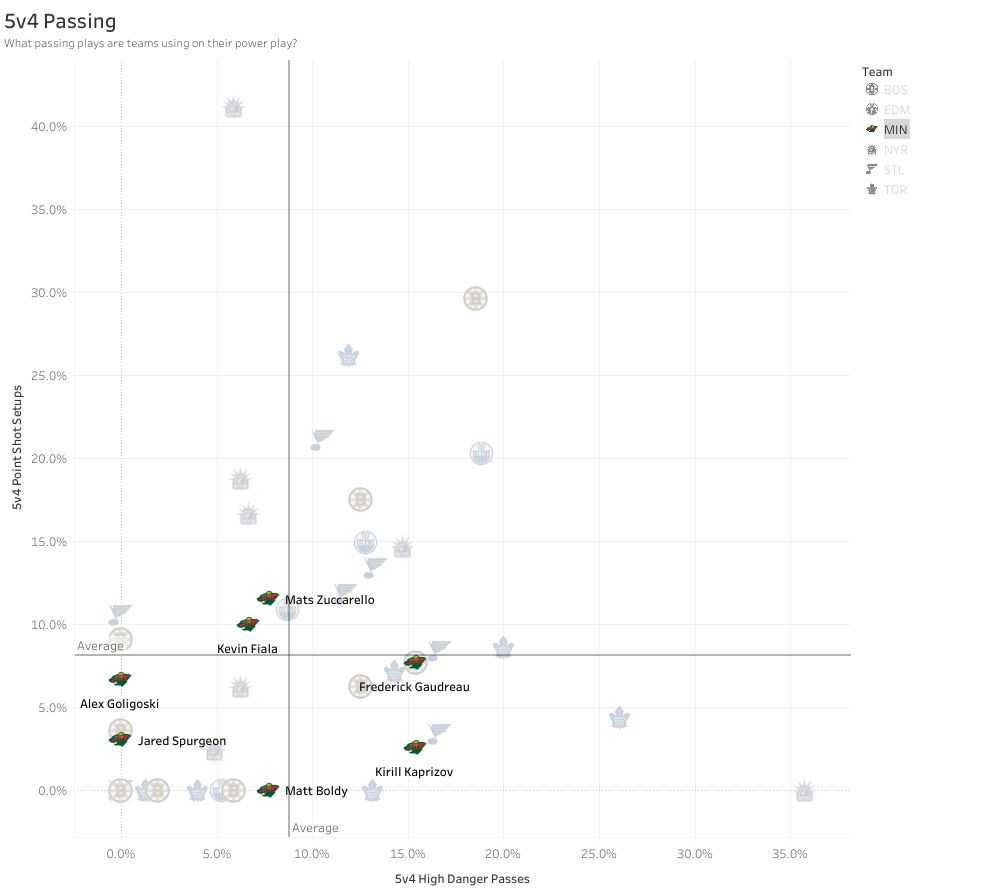
Kaprizov, Fiala, and Zuccarello are exceptional chance creators at even strength, but there is an extremely noticeable disconnect on the power play.
What’s the fix for this? That’s something Evason must find out before the playoffs. The only playoff team with a worse power play percentage is Vegas, and they might miss the playoffs entirely. The Wild know how difficult scoring in the playoffs is, especially with a defunct power play.
Guerin addressed the squad depth at the deadline, but the other issues will have to be addressed by the offensive leaders of this team. A power play with this much talent should not be struggling as much as it is, and that just won’t cut it in May. Whether it’s a simple personnel swap or an outright system change, something has to give for this Wild power play to get back on track.
Think you could write a story like this? Hockey Wilderness wants you to develop your voice, find an audience, and we'll pay you to do it. Just fill out this form.




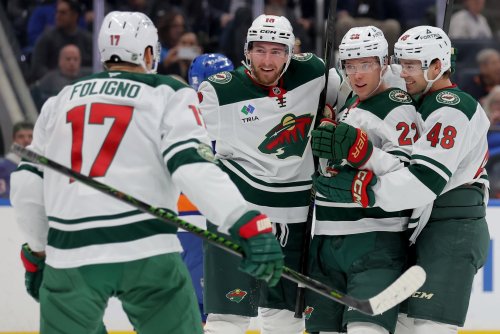

Recommended Comments
There are no comments to display.
Join the conversation
You can post now and register later. If you have an account, sign in now to post with your account.
Note: Your post will require moderator approval before it will be visible.